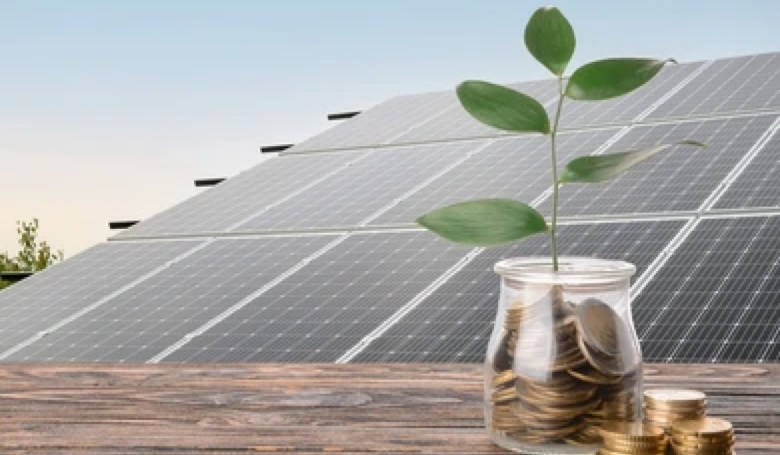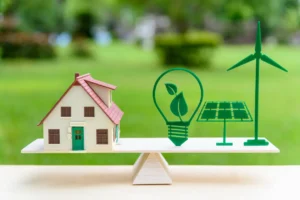Solar energy is no longer just a buzzword in the realm of clean energy; it’s a practical solution that benefits both your wallet and the environment. The rising costs of traditional energy sources, combined with increasing concerns about climate change, have made solar power a popular choice for more households and businesses. But how does harnessing the sun’s energy actually translate into financial savings? And what impact does it have on preserving our planet for future generations? This blog explores how solar power works, the cost savings it brings, its environmental benefits, and how government incentives can accelerate your switch to renewable energy.
How Solar Energy Works
At its core, solar energy involves converting sunlight into electricity. Solar panels, which are composed of photovoltaic (PV) cells, absorb sunlight and convert it into direct current (DC) electricity. This energy is then passed through an inverter, which converts DC electricity into alternating current (AC) electricity—the type that powers your appliances and devices.
Modern solar technology has significantly improved in efficiency, allowing panels to generate electricity even on cloudy days. Additionally, surplus electricity generated during peak sunlight hours can be stored in solar batteries or sent back to the grid, reducing dependence on traditional energy sources. By tapping into this inexhaustible source of energy provided by the sun, solar power creates a self-sustaining system for clean, renewable electricity.
Cost Savings
One of the most compelling reasons to consider solar energy is its potential to dramatically reduce your electricity bills. After the initial investment in solar panel installation, the cost to generate solar power is virtually zero. Unlike traditional energy sources, which are subject to fluctuating fuel prices, the sun provides its energy for free.
Homeowners who switch to solar often see their utility bills cut by 50% or more. If you live in a sunny region, your panels may produce enough electricity to eliminate your energy bill entirely. Furthermore, by selling surplus power back to the grid through net metering programs, you could even earn credits or payments, maximizing financial benefits.
Additionally, solar energy systems increase property value. Homes equipped with solar panels often command higher resale prices, as buyers are increasingly drawn to properties that promise long-term energy savings and sustainability.
Environmental Impact
Solar energy does more than save money—it significantly reduces your carbon footprint and helps combat climate change. Unlike fossil fuels, solar power generation releases zero greenhouse gas emissions. By switching to solar, you’re directly reducing the demand for coal, oil, and natural gas, which are major contributors to air pollution and global warming.
The production and use of fossil fuels lead to harmful consequences such as deforestation, oil spills, and air contamination. Solar energy, on the other hand, offers a much smaller environmental footprint. Even the manufacturing process for solar panels has become more sustainable over time. When you choose solar, you are contributing to cleaner air and water, and you’re helping to pave the way for a more sustainable energy future.
Government Incentives and Rebates
Switching to solar can be an investment, but government incentives and rebates make it more accessible and affordable than ever. Many federal, state, and local governments offer tax credits, grants, and other programs that significantly reduce the upfront cost of solar panel installation.
For example, in the U.S., the Federal Tax Credit for Solar Photovoltaics allows homeowners to deduct 30% of the cost of installing a solar energy system from their federal taxes. State-level programs often include additional incentives, such as sales tax exemptions and property tax abatements for homes with solar installations.
When combined, these incentives can cover a substantial part of your initial costs, making the transition to solar financially viable for millions of households. Businesses, too, benefit from specialized rebates and accelerated depreciation programs that can offset installation expenses.
Solar Panel Installation and Maintenance
Contrary to popular belief, solar panel installation is not complicated or requires significant upkeep. Professional installation services streamline the process, ensuring the panels are placed where they will capture the most sunlight. Installation timelines are often short, and most systems start producing electricity within hours of being connected.
Maintenance is minimal and cost-effective. Solar panels are designed to be durable, with most systems lasting 25-30 years or longer. Cleaning them a few times a year to remove dirt or debris is typically all that’s needed to keep the panels functioning efficiently. For added peace of mind, manufacturers often offer lengthy warranties that cover both the panels and installation workmanship.
Community and Global Impact
The benefits of transitioning to solar extend beyond individual households; they can drive significant community and global change. Solar installations, particularly when scaled across neighborhoods or cities, reduce reliance on centralized energy grids. This increases energy resilience and reduces the risk of power outages during periods of high demand.
Globally, the adoption of solar energy is accelerating the shift towards a cleaner planet. By reducing the demand for fossil fuels on a broad scale, we can slow deforestation, protect endangered ecosystems, and ensure access to clean air and water worldwide. Every household that switches to solar energy contributes to a global transition to renewable energy sources, creating a lasting impact for generations to come.
Turn Sunshine into Savings and Sustainability
Switching to solar energy is one of the simplest and most impactful actions you can take to save money while helping to protect the planet. By harnessing the power of the sun, you can reduce your energy bills, minimize your environmental impact, and enjoy long-term financial and personal benefits. Whether you’re motivated by cost savings, sustainability, or energy independence, solar energy provides the perfect solution.
If you’re ready to take the next step, reach out to a trusted solar provider to learn more about how to get started. The shift to solar is not just an investment in your home—it’s a commitment to a brighter and more sustainable future for all.
FAQs
1. How much does it cost to install solar panels?
The cost depends on the size of the system and your location, but government incentives can significantly reduce your expenses. On average, U.S. homeowners spend $15,000-$25,000 before rebates and credits.
2. Do solar panels work on cloudy days?
Yes! While solar panels produce more energy on sunny days, they still generate electricity from indirect sunlight on cloudy days.
3. Can solar energy completely eliminate my energy bill?
For many users, yes. If your panel system generates more energy than you consume, you may even receive credits or payments through net metering programs.
4. How long do solar panels last?
Most solar panels come with a 25-30 year warranty, but they can continue generating electricity beyond that time frame with slight efficiency drops.




